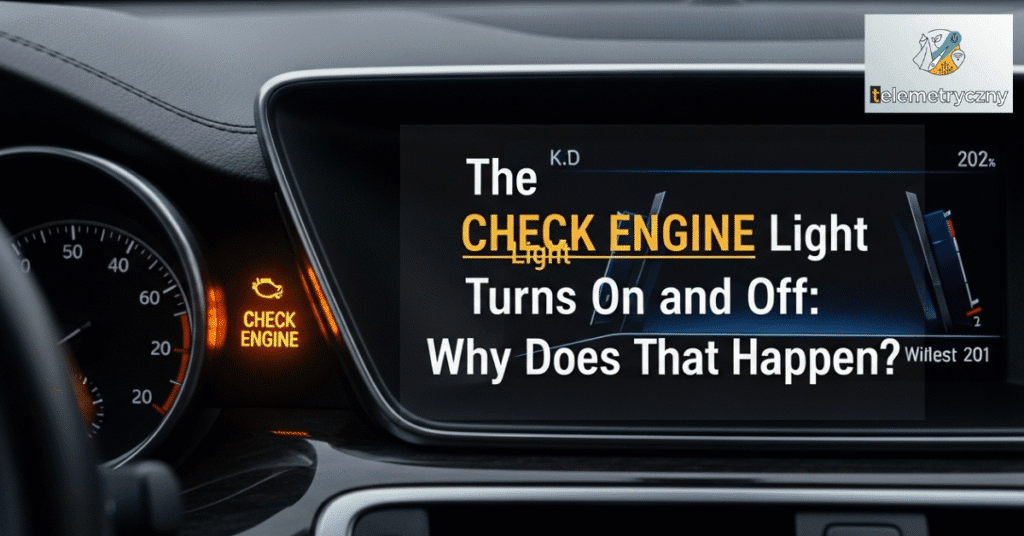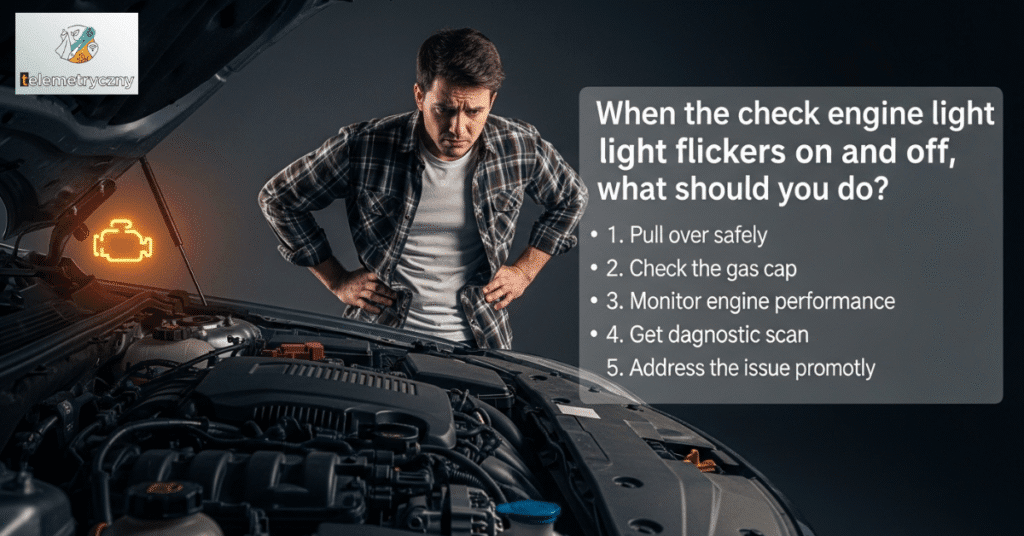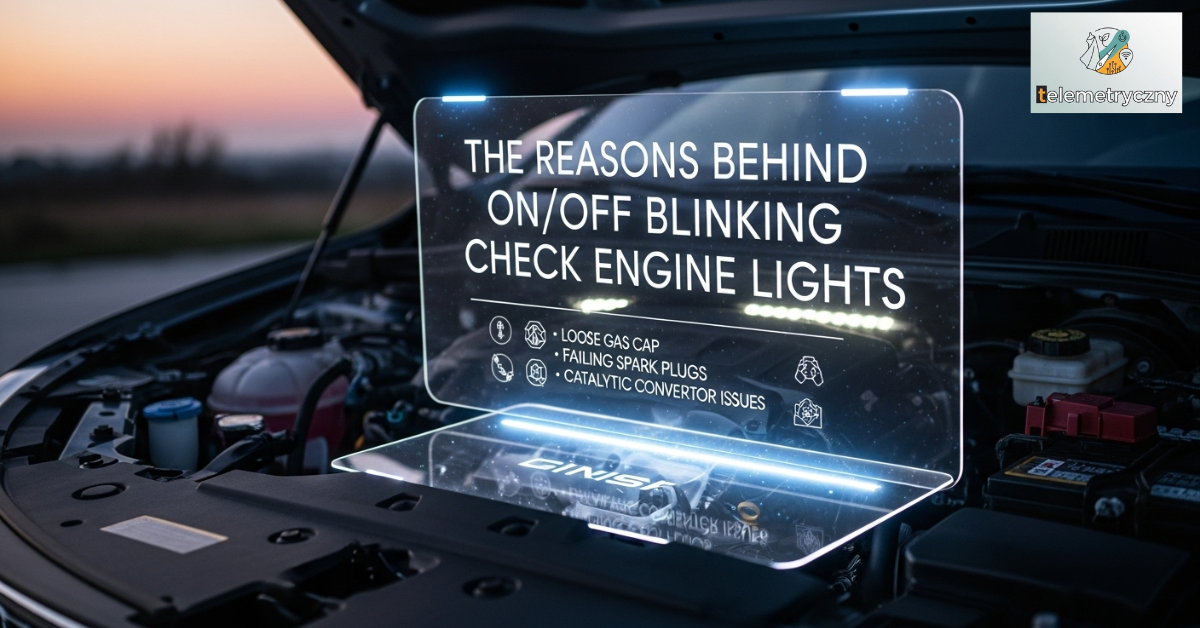Ugh not again, just like that, my check engine light came on for a split second and just as fast, it turned off. Calling a mechanic comes to mind, or maybe frantic driving to the shop. Honestly, it’s confusing and incredibly stressful when a car is trying to ‘talk’ and you have zero idea.
In simple terms, my endeavour in this blog is to provide clarity to the mysteries revolving around the vehicle in question. So let’s demystify the engine light, its significance, and its toggling behavior. Enabling you to push forth confidently.
What Does the Check Engine Light Actually Mean?
The check engine light, sometimes referred to as the engine management light or CEL, is your car’s indication that something is amiss. It is part of your vehicle’s OBD-II (Onboard Diagnostics) system, which continuously monitors the air intake, engines, fuel, emissions, and other aspects.
The computer in your car logs any anomalies no matter how small that are picked up by its sensors and turns on the little indicator on the dashboard. Imagine that as your engine attempting to text you without any explanations or emojis.
And when it keeps turning on and off? That usually means whatever issue it’s detecting is intermittent, not constant, but recurring just enough to raise flags.
The Check Engine Light Turns On and Off: Why Does That Happen?

Let’s get one thing traight: a check engine light that flickers or disappears doesn’t mean your car is magically fine. In fact, intermittent warning lights are often the trickiest. Here are the most common reasons your check engine light might play hide and seek:
1. Loose or Faulty Gas Cap (Yes, Seriously)
It sounds too simple, but this is one of the top reasons your CEL turns on. If your gas cap isn’t tight enough or the rubber seal is worn out your fuel system can lose pressure.
Your car thinks there’s a leak and sets off the light. Then later, as pressure stabilizes, the light goes off.
Fix: Make sure your gas cap clicks by always tightening it. It should be replaced if it is damaged. They’re inexpensive and simple to locate.
2. Failing Oxygen Sensor
In order to help the engine balance the proper ratio of fuel to air, the oxygen sensor measures the amount of unused oxygen that remains in your car’s exhaust. The light may switch on and off due to inconsistent or low-quality data from a broken sensor.
Ignoring this could harm the catalytic converter and reduce your fuel efficiency.
Fix: Before a larger repair becomes necessary, replace the sensor if it is failing and get a diagnostic scan.
3. Catalytic Converter Trouble
By converting carbon monoxide to carbon dioxide, your catalytic converter lowers dangerous pollutants. When it starts struggling either from clogs, age, or engine issues your car knows.
This kind of issue often shows up as a flashing or flickering CEL, especially during acceleration.
Fix: If caught early, repairs are cheaper. But ignore it, and you’re looking at a replacement that could cost over $1,000+.
4. Misfiring Engine
If your engine seems harsh or unsteady, one of the cylinders could not be functioning as it should. This kind of problem is often linked to old spark plugs, a defective ignition coil, or a clogged fuel injector. The strange part? It doesn’t always happen all the time. In fact, it might only show up when it’s cold outside or during rainy weather which explains why the check engine light comes and goes.
Repair: If your engine seems unsteady, noisy, or slow, have it checked out. Your engine may sustain harm if you ignore a misfire.
5. Faulty Mass Air Flow (MAF) Sensor
The MAF sensor helps you optimize fuel delivery by monitoring the amount of air entering your engine. Your car’s brain may get conflicting signals from a filthy, blocked, or broken component, which could occasionally cause your CEL to go off.
Repair: Depending on their state, MAF sensors can require cleaning or replacement.
6. Wiring or Sensor Glitches
Sometimes it’s the signal, not the component, that’s the problem. Intermittent problems may be caused by a broken connector, a damaged cable, or a damp environment. It is quite hard to find these kinds of issues without the proper tools.
Fix: A professional scan will help trace the source so you’re not guessing.
See More: The Art of Gray Blending for Dark Hair
When the check engine light flickers on and off, what should you do?

Let’s break it down into real, practical steps you can follow:
1. Don’t Panic But Don’t Ignore It
If your car is driving normally, don’t assume everything is fine. The warning might disappear, but the error code stays stored in your car’s memory.
Even if the light goes off, the issue was real, it just isn’t active right now.
2. Check the Gas Cap
This should always be your first move. It takes 10 seconds. Tighten the cap until you hear 3+ clicks.
Then drive for a day or two. The issue will be resolved if the light remains off.
3. Pay Attention to How the Car Feels
Notice anything weird? Shaking? Sluggish acceleration? Strange noises? These symptoms mean something’s definitely wrong, don’t wait.
Even if there’s no obvious problem, trust your gut. You drive your car every day and you’ll know when something feels “off.”
4. Get a Diagnostic Scan
Free code scans are frequently provided by auto parts retailers like AutoZone. . Using an inexpensive OBD-II scanner at home is an additional choice.
This will provide you with certain error codes (such as P0420, P0171, etc.) that will assist you identify the cause of the light.
5. Take Action Based on the Code
Once you know the code, research it or take it to a trusted mechanic.
Do not simply remove the code and go on. Minor issues can have catastrophic effects on your engine, emissions system, and fuel economy if you ignore them.
The Reasons Why Ignoring a Flickering Is Bad Verify the engine light

Nobody wants to spend money on repairs, let’s face it. However, pretending that the light didn’t go out won’t solve the issue; on the contrary, it typically makes things worse.
Lights that flash occasionally can be deceptive. But the truth is, every time that light turns on, something is happening behind the scenes, something worth your attention.
Cars are smart. They don’t cry wolf. So if your CEL is blinking or showing up randomly, it’s telling you something needs care, even if it seems small now.
Real Talk: What It Could Cost You
| Issue | Potential Repair Cost |
| Loose Gas Cap | $0–$20 |
| Oxygen Sensor Replacement | $100–$300 |
| Catalytic Converter | $1,000+ |
| Spark Plug/Ignition Coil | $50–$400 |
| MAF Sensor | $150–$400 |
| Engine Diagnostics | $80–$150 |
What We Recommend
At Top Gun Auto Repair in Georgetown, KY, we’ve seen all kinds of check engine light mysteries. From harmless gas caps to serious catalytic issues we’ve diagnosed and fixed it all.
We always tell our customers: Don’t wait. Get it scanned. The earlier you catch a problem, the cheaper it is to fix.
See More: Food Storage Secrets of Roots, Stems, and Leaves
conclusion
Consider your check engine light to be a discomfort warning from your body. You wouldn’t ignore chest pain just because it went away after 5 minutes. The same goes for your car; just because it seems fine, doesn’t mean it is.
When your check engine light turns on and off again, you’ll know what to do and, more crucially, why. You now possess the power that comes with knowledge. Avoid getting stressed up by that small orange light again, drive carefully, and be safe.
FAQs
My check engine light came on and went off. Should I still get it checked?
Yes! Even if it turns off, your car stored the issue. It’s worth scanning to avoid bigger trouble later.
Can a loose gas cap really trigger the check engine light?
Absolutely. It’s one of the most common reasons and the easiest to fix. Simply tighten it, then check to see if the light stays out.
Is it okay to drive when the check engine light is blinking?
Blinking is a dangerous sign, especially when driving. Pull over and get it checked immediately.
What if my car feels fine but the light comes on randomly?
Sometimes issues don’t have any overt signs. A fast scan can uncover hidden problems before they become more serious.
Hi,
I’m Tehreem, a content writer specializing in SEO-optimized articles that rank and engage. Whether it’s AI-assisted or fully human-written content, I deliver clear, creative, and results-driven writing.


1 thought on “The Reasons Behind On/Off Blinking Check Engine Lights”